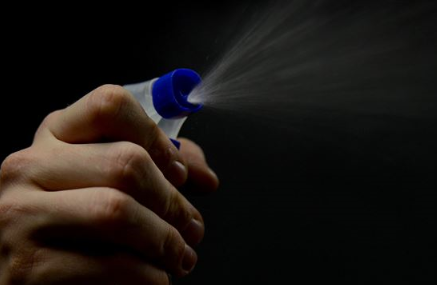
Household mold can be a nightmarish scenario.
Not only can it cause structural damage to your home, it can also put your and your family’s health at risk.
You could experience an allergic reaction, eye, nose and throat irritation, and even nosebleeds and headaches.
In extreme cases, you can even develop asthma or lung infections due to increased exposure to household mold.
Luckily, there are common household items you can use to kill small amounts of mold in your home.
Read on to find out the truth about which items actually kill mold and how to use them effectively.
Does Bleach Kill Mold?
The idea that bleach can kill mold is a myth!
In reality, bleach only kills surface mold, not the membrane that lives underneath the black, fuzzy growth.
This mold membrane is where the heart of the problem truly lies.
If you try using bleach to kill mold, it will usually return with a vengeance.
The chemical structure of bleach makes it unable to penetrate porous surfaces like drywall or wood, which means that mold membranes will simply retreat deeper into whatever surface they’re on to avoid the chemical.
Once first exposed to bleach, the mold recognizes it as a threat and can actually use it as a fungal food to grow more rapidly.
That’s right – using bleach to kill mold can actually feed the problem!
The Environmental Protection Agency (EPA) does not recommend using bleach to kill or remove mold, except under special conditions when supervised by a professional. If you want to effectively eradicate mold in your home, bleach simply won’t cut it.
Does Vinegar Kill Mold?
Just because bleach is out doesn’t mean you don’t already have something in your pantry that can effectively kill mold.
That old bottle of vinegar in your cupboard is actually a powerful tool.
White vinegar is a mild acid that is known to kill roughly 82 percent of mold species, and it can even help prevent mold outbreaks in the future.
Use vinegar to eradicate small outbreaks of mold by following these simple steps:
Make sure you are wearing protective gear, including a mask, goggles and gloves, to protect yourself from direct exposure to mold.
- Pour plain, white distilled vinegar into a spray bottle. Because mold is such a resilient force, it’s best not to dilute the vinegar.
- Spray the vinegar directly onto the mold, and let it sit for at least an hour without rinsing or scrubbing so that the vinegar gets completely absorbed by the mold.
- If scrubbing is necessary, make a baking soda solution to use after the vinegar. Combine 1 teaspoon of baking soda with 2 cups of water in a spray bottle and shake until thoroughly mixed.
- Spray the baking soda solution directly onto the mold and vigorously scrub the area with a scrubbing brush or scouring pad. Safety tip: be sure to use protective gear while scrubbing to prevent direct contact with the mold.
- Rinse the area with clean, warm water.
- Spray the area again with either the vinegar or the baking soda solution and let the chemicals dry naturally to help kill any remaining mold and prevent regrowth. The strong smell of vinegar will naturally fade within a few hours.
If the mold growing in your home is too dangerous or widespread to handle on your own, it’s time to call for professional help.
The experts at ServiceMaster are here to help you remediate the problem and prevent any long-term damage to your home’s structure or your health. Reach out to learn more about our proven techniques for mold remediation.
